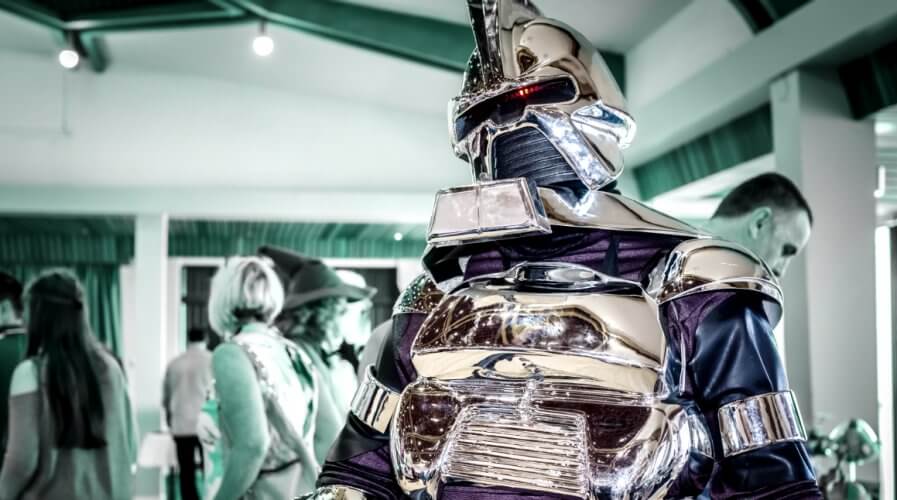
The future of the chatbot is social, intelligent and no replacement for humans. Source: Shutterstock
The future of chatbots: Human, social, intelligent
HEADLINES about chatbots are often not very positive. Racist bots, bots which descend into their own language, bots which are considered dehumanizing, bots which replace humans’ jobs & careers – everyone knows a horror story or two.
And as an undercurrent to it all, the phrases which throw believers in a dystopian future into paroxysms of hysteria: artificial intelligence, deep learning, intelligent machines, technological takeover and, effectively, the end of days.
The realities of chatbots are rather more mundane. First and foremost, most bots exist in business as adjuncts to existing services and offerings. If most people find it easier not to speak to a real person to order a pizza, they can use an app, or ‘talk’ to a chatbot.
Call centers’ managers use chatbots as the first line in a communication journey for callers concerned about their account or service. And increasingly, organizations are using bots as a further string to their marketing bows: chatbots are a useful conduit to reach out to existing and prospective customers.
What changes will we see happening to chatbots over the next twelve months or so? Here are Tech Wire Asia‘s predictions:
1. Integration with apps
The vast majority of smartphone users interact with four to six apps every day. While it’s not rare to have hundreds of apps installed on a handheld, many users don’t bother with more than a dozen or so.
As Facebook, WeChat or LINE become the new ‘home pages, chatbots will be making the transition more into the ecology of these established platforms.
The owners of social platforms will be supporting this transition – keeping users on their platforms is good business – and will release more tools for developers and organizations to create their own chat apps.
WhatsApp and Snapchat are rapidly monetizing; expect to see bots play big roles in this process as social networks are increasingly pressured to show income streams to their shareholders.
My name is Kevin, and I'm a political AI twitter bot created by @msantalucia. You can read more about me here: https://t.co/2ECr9HuOAz
— Kevin Brown (@kevbrown618) September 12, 2017
2. Brand ambassadors
Chatbots have a great advantage over many forms of electronic marketing, in that they are interactive. Interaction with existing and especially potential customers via a bot allows the harvest of information from customers and clients in ways that static advertising media cannot.
Scaling automated conversations is simply a matter of employing more processing power and storage, and in a cloud-based economy with ever-falling prices for computing grunt, the overheads are negligible relative to the gains.
Conversational interfaces, powered by artificial intelligence (AI) can bridge the gap between legacy systems which rely on manual data entry and the increasing demand for ‘big data’ in business.
3. (Not) Customer Agents
The interactions with AI & chatbots most consumers are familiar with is the virtual customer agent. And although the proponents of disruptive technology hailed the death of the human-centric call/service center just a few years ago, the reality is different.
While simple interactions are still possible without the human touch, chatbots which attempt to problem solve outside a rule-based, logical structure are still more of a hindrance than a help.
Complaints, complications, and requests which require a customer’s contact with a service center are, by definition, outside the auspices of regular rulesets. How would a chatbot cope with:
- Listening sympathetically to complaints?
- Judging a level of compensation for aggrieved customers?
- Addressing any situation which could not be foreseen?
Chatbots can alert humans and escalate issues, but cannot be relied upon to provide the best levels of customer service.
https://t.co/e7wTNNjY7M support an open source AI technology—upvote us on #ProductHunt
— ReplikaAI (@MyReplika) February 8, 2018
4. Raised wages
Once chatbots free up human operators to act on higher-touch interactions, those members of staff will need to be well-trained, expert operators who are capable of decision-making at high levels with an understanding of the whole business.
Rote answers and information dissemination will become part of the bots’ remit. The remaining humans will have a dual role: training the bots, and acting as the back-up for when the bots fail, or fail to manage to act appropriately in non-standard scenarios.
There are already dozens of platforms available which let organizations build, operate, and host chatbots. Some require development expertise, many do not. As well as these platforms, expect an increasing number of social media providers to encourage commercial concerns to build and operate their own bots.
As natural language processing (NLP) and AI capabilities increase, chatbots will become more and more normalized. Humans may never be replaced, but as any software developer will say, the dull, repetitive tasks in any business can be replaced with the judicious application of a little technology. Quite a few human interactions fall into the dull and repetitive category, and that’s where the bots will flourish.
READ MORE
- Safer Automation: How Sophic and Firmus Succeeded in Malaysia with MDEC’s Support
- Privilege granted, not gained: Intelligent authorization for enhanced infrastructure productivity
- Low-Code produces the Proof-of-Possibilities
- New Wearables Enable Staff to Work Faster and Safer
- Experts weigh in on Oracle’s departure from adland






